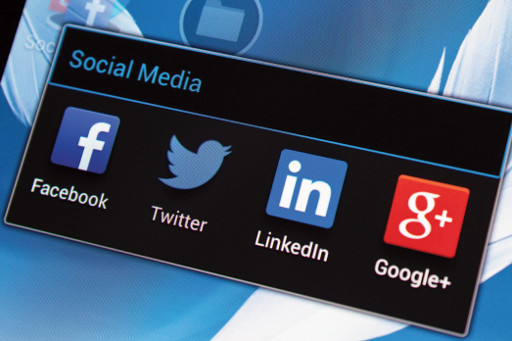Time to tech-proof our health
In Population Health
Follow this topic
Bookmark
Record learning outcomes
We now spend more time using electronic devices like smartphones and tablets than we do sleeping. But what effect is this having on our health?Â
 The recent surge in the use and ownership of electronic devices such as smartphones and tablets is quite remarkable. In fact, according to Ofcom’s Communications Market Report 2014, the average adult in Britain now spends over half their waking hours engaged in media or communications activity on smartphones, tablets, laptops and computers – that’s eight hours and 41 minutes, compared with an average eight hours and 21 minutes asleep.
The recent surge in the use and ownership of electronic devices such as smartphones and tablets is quite remarkable. In fact, according to Ofcom’s Communications Market Report 2014, the average adult in Britain now spends over half their waking hours engaged in media or communications activity on smartphones, tablets, laptops and computers – that’s eight hours and 41 minutes, compared with an average eight hours and 21 minutes asleep.
Ownership of smartphones has increased rapidly, with 61 per cent of adults owning one – up from 51 per cent in 2013, while household take-up of tablets has doubled in the past year, with 44 per cent of households now owning one. Perhaps unsurprisingly, smartphone usage is greatest among 16-24 year olds, with a quarter of all the time they spend on media/communication spent on these devices, and 77 per cent of time spent on social media done so via smartphone. Some 60 per cent of six to 11-year-olds use tablets each week, while for 12 to 15-year-olds, smartphones are the most used devices (67 per cent) after TV.
But what impact does all this time spent staring at screens have on our health? While these new devices may have improved communications, are they leading to a generation of adults plagued by back pain, poor eyesight, insomnia, mental health problems and weight gain?
Focus on eyes
Squinting at a screen for hours each day puts a strain on the eyes. “Signs to watch out for include dry, gritty eyes, eye strain, headaches and blurry vision,†says Karen Sparrow, head of professional development at the Association of Optometrists. Dry eye is a common problem that can be caused by excess screen use.
“We’re seeing more younger people presenting with problems such as dry, sore eyes and this can be related to the amount of time spent looking at screens. It results in less frequent blinking, leading to dry and tired eyes,†says optometrist Francesca Marchetti, councillor at the Association of Optometrists. She suggests firstly referring customers with dry eye symptoms to their optometrist for diagnosis and treatment advice, but there are tips you can pass on too.
“Dehydration can be a factor, so ensure customers drink plenty. An omega-3 rich diet will also help, or suggest a supplement. Regular screen breaks – ideally every 20 minutes – will help. Recommend that they use preservative-free eye drops and put them in before a session of screen work, rather than waiting until their eyes are already dry.†Some research has suggested an increase in short-sightedness among young people, which has been blamed on excess use of smartphones and tablets. Remind customers of the importance of regular sight tests – this should be every two years for people under the age of 70.
“While at work, remember to give your eyes a break and follow the mantra 20-20-20: every 20 minutes focus on something more than 20 feet away for 20 seconds. This gives your eyes a break and encourages you to blink, lubricating the cornea. Whenever possible, look at the furthest point away from you to completely change your focal point and relax your fatigued ciliary muscles,†adds Karen. Karen also has this advice to pass on to help customers avoid eye problems:
- If working on a laptop, desktop computer or tablet, keep the screen 50-66cm away from the eyes. Make sure the top of the monitor is level with the eyes or slightly lower
- Use document holders if inputting data. These enable the eyes to remain focused as they look from the screen to the reading material
- Be sure to blink fully and regularly, especially if wearing contact lenses, as eyes dry out more when staring at a screen.
Mind your back
Increasingly, the injuries we treat are due to a sedentary lifestyle.
Some of this, says Sammy, is definitely caused by the amount of time spent staring at screens. “Incidence of back pain has rapidly increased. When I qualified 25 years ago, it was a six in 10 lifetime incidence; now it’s eight in 10. I’m sure in the next decade, this will rise to 10 in 10,†says Sammy.
Sammy’s patients are getting younger too. “We’re seeing more younger people presenting with what were traditionally older peoples’ injuries and problems. I never used to treat children, but now I regularly see them from age 11. Children have become more sedentary but also weaker in muscle strength.â€
Typical problems that can arise from smartphone usage include hand and finger/thumb pain, forearm pain, back pain, shoulder and neck pain and headaches. From tablets and laptops, postural pain as well as back pain is common. Here’s how customers can help prevent back and other muscular pain and injuries related to screen use:
- Get your work station properly assessed
- When sitting at a desk using a laptop, computer or tablet, always follow BBC, which means ‘Bum in the Back of the Chair’, says Sammy
- Ensure your mouse is placed where your knife would be, not where you’d place your glass
- Don’t use a tablet for writing long documents
- Walk and talk on your smartphone to reduce sedentary time
- Change hands while on the phone to reduce neck/shoulder tension or use a headset
- Limit texts to just a few words
- Use dictation software – it’s faster and reduces strain on hands and fingers.
Get moving
While we can’t blame new technology like tablets for the obesity epidemic, devices that increase our sedentary time will indirectly be having an impact on our weight, unless we’re taking sufficient exercise and eating healthily. Some research has suggested that remaining seated for extended periods is bad for health, regardless of how much exercise we take. It’s been linked with obesity, type 2 diabetes, some forms of cancer and premature death.
Prolonged sitting is thought to slow the body’s metabolism, which affects its ability to regulate blood sugar, blood pressure and burn fat. One study involving 800,000 people found that compared with those who sat the least, those who sat longest had a 112 per cent increased risk of diabetes, 147 per cent increased risk of cardiovascular problems and a 90 per cent increased risk of death due to cardiovascular problems. Another study, which followed 300,000 Europeans for 12 years, concluded that inactivity was twice as deadly as obesity for health.
Researchers found that if inactivity levels were increased so that no-one was classed as inactive, we could reduce premature death by over seven per cent, which compares with avoiding obesity. Tam Fry, spokesperson for the National Obesity Forum, says: “You can communicate using social media without being sedentary. You can walk around using your mobile or tablet.â€
“You need to be on your feet as much as possible during the day. Using new technology is fine unless you’re seated, otherwise it can contribute to weight gain if you’re not exercising enough. Guidelines suggest 10,000 brisk paces per day as a minimum for adults.â€
Tam suggests sedentary workers walk around after every hour seated during the day, going for a walk at lunchtime instead of eating at a desk. “Anything that reduces sedentary time will help reduce weight gain,†he says. Scientists are worried that our increasing screen use during the day and before bedtime is contributing to sleep problems, especially among teenagers.
A study published in the BMJ found that screen use was related to difficulty getting to sleep and lack of sleep. Screen use is thought to affect sleep patterns in several ways: through bright light exposure, by its time consuming nature and by increased stimulation of the brain. “Bright light may impact sleep in two ways: by delaying the circadian rhythm when exposure takes place in the evening and also by causing an immediate activation in itself,†says the report.
Repeated use of electronic media in the bedroom can reduce sleep, as the bedroom becomes associated with this rather than purely being a place to sleep. It’s believed that exposure to the blue light emitted by these devices disrupts our circadian rhythm, which controls sleep patterns. The light also affects production of the sleep inducing hormone melatonin. The advice is to limit screen use in the couple of hours before bedtime and to keep screens out of bedrooms.
Â

People should plan a social media part of their dayÂ
Â
A state of mind
Several recent studies have linked screen usage and also social media with depression and anxiety. A Japanese study of 250,000 workers over three years found that sitting in front of a screen for five plus hours a day was linked with increased risk of depression and insomnia. Another study looked at how mobile phone usage affects selfesteem and anxiety levels.
The researchers found that avid users felt more anxious and had trouble switching off from social media sites such as Facebook. “Research shows that the people who suffer more depressive and anxious states when using technology are the ones who already suffer from depression. So people who already have mental health issues need to be aware that technology can make it worse and so they need to use smartphones and tablets in a planned way,†says Graham Jones, internet psychologist and author of Click.ology.
What about people addicted to checking social media, emails and texts? “The best thing to do is to plan a ‘social media’ part of your day – something that happens every day at the same time and so it becomes something you can look forward to. Once it becomes a routine, you can stop checking every five minutes because your subconscious brain knows you will get the stimulation you need later,†says Graham.
